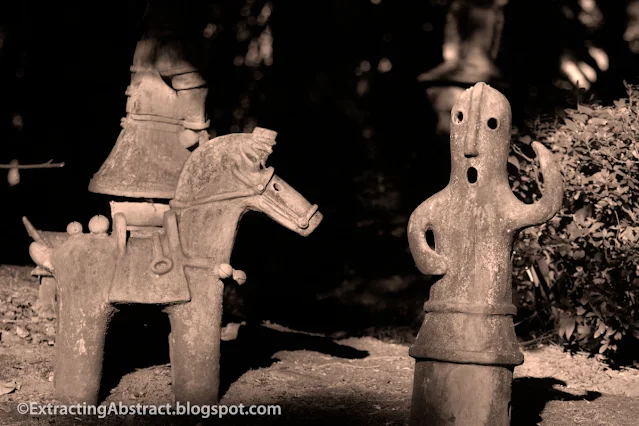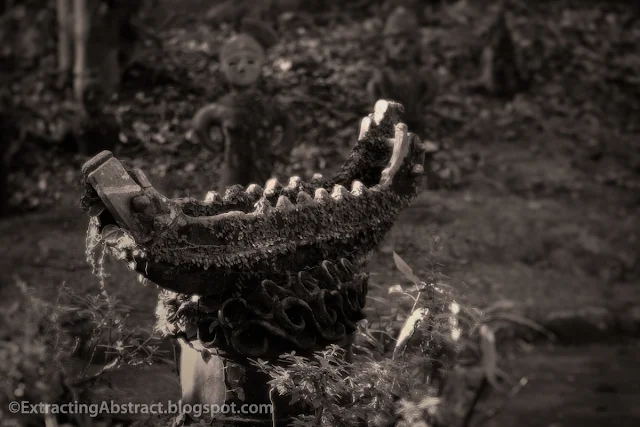The story about Heiwadai Park in Miyazaki goes on.
I came across Chestnut tigers when rambling Haniwa Park within Heiwadai Park where around 400 replicas of ancient Japanese terracotta Earthenware figures called "Haniwa (埴輪)" were displayed. Hani/埴 and wa/輪 mean clay and circle, respectively.
The history of Haniwa, which belong to Haji pottery (土師器), is considered to originate from the base-shaped potteries (特殊器台・特殊壺). They were made in the latter Yayoi period (2nd century) and were discovered in Kibi province. As time went by, the shape of Haniwa turned into more complicated forms that mimicked their belongings (i.e. houses, animals, tools), habits, and spiritual beings. Along with Mounded Tombs of Ancient Japan, Haniwa production flourished in the 5th century.
Recently, man-shaped Haniwa were dug up from Mukadezuka of Nyutabaru Burial Mounds (新田原古墳群第58号墳 [百足塚古墳]) and house or boat-shaped Haniwa were at Saitobaru Burial Mounds (西都原古墳群). All of them are valuable in their quality and quantity.
To my surprise, around 400 Haniwa displayed in the park were made by a passionate woman, named Masa Honbu (本部マサ 1907-1991) in 1963. Yes, these Haniwa were made almost 60 years ago!!! Well, to be precise, she did not make 400 Haniwa all by herself. It was her company (see YouTube below). Either way, Ms. Honbu is considered the Godmother of Haniwa production in Japan.










No comments:
Post a Comment
Your comments are always welcome! It's NOT a bad idea to follow this blog, if you are not a follower already:)
日本語でのコメント大歓迎です。